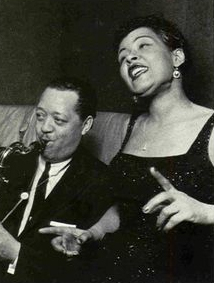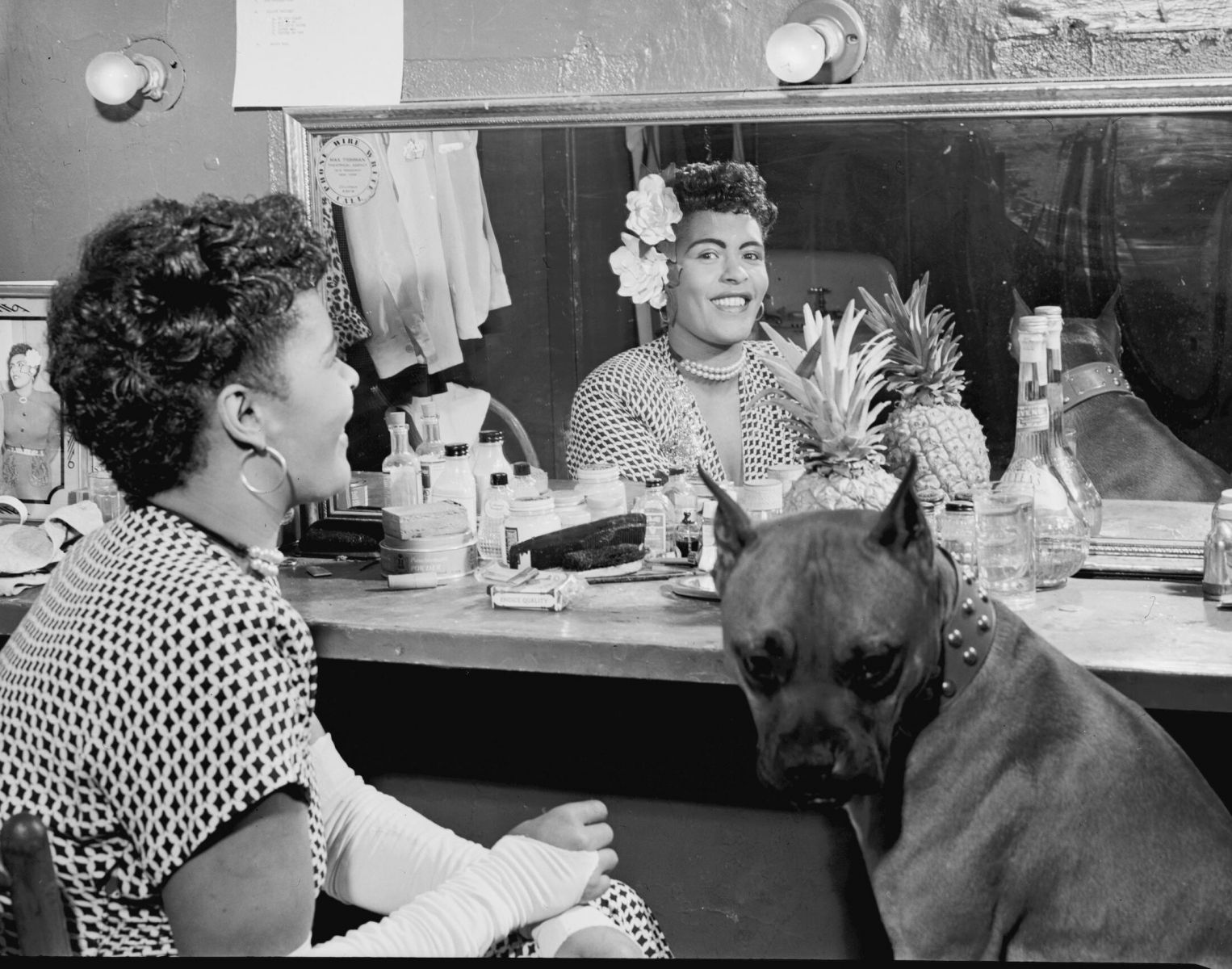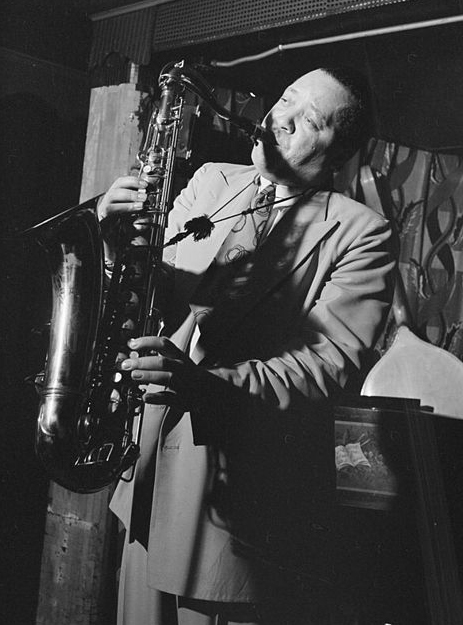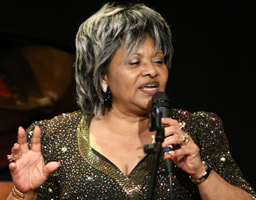
Lester Young and Billie Holiday. Courtesy jazzit.it.
In the 30s Billie Holiday and Lester Young recorded a series of memorable sides together. "He's Funny That Way," "Travlin' All Alone" and "Easy Livin," are just a few. This edition of Riverwalk Jazz touches on their musical collaboration and the personal friendship between these two titans of jazz.
Billie and Lester had an amazing intuitive rapport when they got together to make music. Listening to their recordings, it's clear they inspired each other musically. (In 2009, the Sony label reissued a collection of their recordings under the title, A Musical Romance.)
For Billie Holiday singing was a way to survive. Born poor and black in Baltimore around 1915, she grew up in Harlem, supported by her mother who worked as a maid. Billie said, "The Depression was nothing new to us, we always had it."
Billie was a skinny 15-year-old kid when she went down to a local dive in Harlem to audition for a job as a dancer. Told she wasn't "pretty enough" to be a dancer, she tried singing instead and was surprised to find out they liked it enough to give her a job.
Scratching out a living singing in Harlem clubs in the early 30s, Billie was discovered by the well-connected talent scout and record producer John Hammond. She went on to wide acclaim as one of America's great vocal interpreters of jazz and blues songs.

Billie Holiday in her dressing room with her dog "Mister," NYC, 1946. Photo by William P. Gottlieb, Library of Congress.
Tenor saxophonist Lester Young came from a musical New Orleans family. As a ten-year-old boy, Lester played drums in his father's carnival band, travelling throughout the Midwest on the tent show circuit. In his teens, he set out to make it on his own.
Early in his career, Lester was urged to play down his own unique musical style. While he was with Fletcher Henderson's Orchestra, the band leader's wife forced him to listen to Coleman Hawkins' records over and over again in a vain attempt to get him to give up his lyrical approach and imitate Hawk's style. When Lester joined Count Basie at the Reno Room in Kansas City in 1934, finally his own style had a chance to blossom.

Lester Young at The Famous Door, NYC 1946. Photo by William P. Gottlieb, Library of Congress.
Billie and Lester met at a Harlem jam session in the early 30s and worked together in the Count Basie band and in nightclubs on New York's 52nd St. At one point Lester moved into the apartment Billie shared with her mother, Sadie Fagan. The story goes that Lester was a great fan of Sadie's home cooking and tired of living in rat-infested New York hotel rooms. He was just part of the family. It was a pleasant change to have a gentleman around the house, and Lester was always a gentleman.
Billie insisted their relationship was strictly platonic. She gave Lester the nickname "Prez" after President Franklin Roosevelt, the "greatest man around" in Billie's mind. Lester in turn gave Billie her famous nickname, "Lady Day."
When Billie was asked to explain her style of singing, she said, "I don't think I'm singing. I feel like I'm playing a horn. I try to improvise like Les Young, like Louis Armstrong or someone else I admire. What comes out is what I feel. I hate straight singing. I have to change a tune to my own way of doing it. That's all I know."
About Lester Young, Billie said, "For my money, Lester was the world's greatest. I loved his music; my favorite recordings are the ones I made with Lester. Lester sings with his horn. You listen to him and you can almost hear the words."
Lester Young and Billie Holiday were both unusually sensitive souls, easily hurt by the hard knocks of the music business and the blatant racism of America in the 1930s. To ease the pain, they both found solace in drugs and liquor.
Lady Day once talked about her life on the road with Artie Shaw: "Most of the cats in the band were wonderful to me, but I got tired of scenes in crummy roadside restaurants over getting served. Some places wouldn't even let me eat in the kitchen. I got tired of having to make a Federal case over breakfast, lunch and dinner. You had to smile to keep from throwing up. As they say, 'There's no business like show business.'"
Lester Young died on March 15, 1959 at the age of 49. Billie Holiday followed him a few months later in July. She was 44. These two old friends ended their lives as tragic figures, their genius worn away by heavy drinking and drugs.

Topsy Chapman. Photo courtesy of the artist.
Through their recorded legacy, Prez and Lady Day continue to entertain audiences and influence the course of jazz music.
Our special guest on this broadcast is New Orleans' vocalist Topsy Chapman, a headliner at jazz and gospel festivals around the world.
Photo credit for Home Page: Lester Young and Billie Holiday. Image courtesy jazzit.it.
Based on Riverwalk Jazz script by Margaret Moos Pick ©1995


